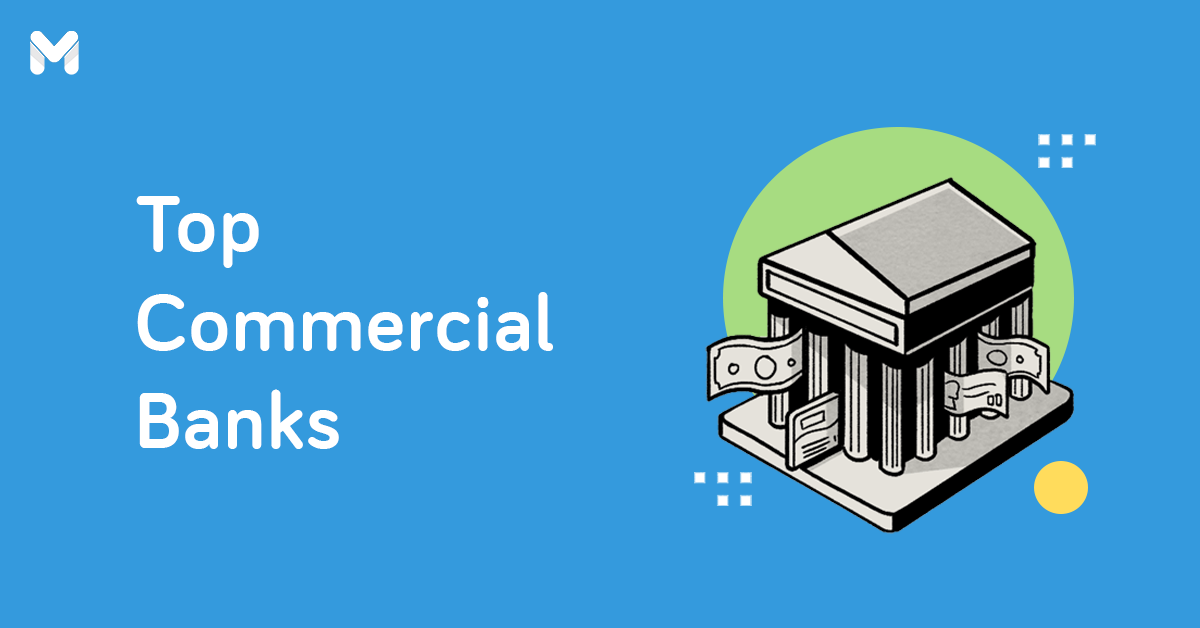Even though banking has gone digital these days, traditional financial products like checking accounts are still standard in the Philippines. Some businesses and lending institutions even prefer payments in checks that serve as tangible proof of transaction.
For regular folks, the need for a checking account in the Philippines may not be as urgent as that for a savings account, except for borrowers required to issue post-dated checks[1] and those who need to make large sum payments.
Do you want to know the requirements, steps, and where to open a checking account? Read on to find out more.
What is a Checking Account?
A checking account, also called a current account, is a type of bank account that enables the holder to make over-the-counter deposits and withdrawals through writing checks and/or using a card.
Aside from a checkbook, many checking accounts nowadays come with an ATM or debit card for withdrawals, point-of-sale (POS) transactions, and online payments. Some even include a passbook for transaction monitoring.
How Does a Checking Account Work?

What is a checking account used for? The ability to write checks is what defines a current account. But since account holders can also use a debit card, a checking account in the Philippines can be used for a wide range of financial transactions, including the following:
- Monthly payments for a personal loan, car loan, housing loan, or life insurance premium by issuing post-dated checks
- Payment for credit card bills
- Car insurance premium payment
- Utility bills payment
- Payment for rental fees, tuition, and large-amount transactions
- Payment for various business expenses
- Monitoring business transactions through a monthly statement of account and online banking facility with images of issued checks
- Making in-store and online purchases using the ATM/debit card
👉 How to Access Funds in a Checking Account
Checking accounts are highly liquid, meaning holders can easily access funds. Here are the various ways to access money in a current account:
- Writing a check
- ATM withdrawals and POS transactions using a debit card
- Over-the-counter withdrawals
- Online funds transfer
👉 Benefits of Having a Checking Account
Why is it important to have a checking account? Besides being a requirement for loan amortization and insurance premium payments, checks are also a safer and more convenient way to pay a large sum of money.
You'd feel more secure bringing a check than cash when paying a six-digit amount. And even if someone gets their hands on your signed check, they won’t be able to cash it if they’re not authorized to do so.
A current account also lets you keep a record of your transactions. Checks come with serial numbers, which you can easily track via the monthly statements mailed to you or the bank’s online banking channel.
Checking Account vs Savings Account: What is the Difference?
Checking accounts share some similarities with savings accounts, like the ability to deposit and withdraw funds. Deposits in both types of bank accounts are insured for up to ₱500,000 by the Philippine Deposit Insurance Corporation (PDIC).
Still, checking and savings accounts differ in many ways. The most obvious difference is that you can issue checks using a current account. Opening a checking account is also more expensive, with a higher initial deposit and maintaining balance requirements than savings accounts.
Although both deposit accounts can earn interest, savings accounts typically have higher rates than current accounts. This is why the former is ideal for saving money, while the latter is better for making financial transactions.
Related reading: Savings Account vs. Current Account: What are the Pros and Cons?
5 Types of Checking Accounts in the Philippines

Before looking for options, you must know the different types of checking accounts and which one fits your needs best. Checking accounts in the Philippines can be classified into five categories based on their features and purpose.
📌 Entry-Level Checking Accounts
An entry-level current account, sometimes called a starter checking account, is ideal for first-time depositors because of its low initial deposit and maintaining balance requirements of ₱5,000 or less. These accounts don't earn interest or come with a debit card (although some offer an optional card).
📌 Personal/Individual Checking Accounts
This type of checking account is for the personal use of individuals who need to issue checks for different payment purposes.
📌 Business/Corporate Checking Accounts
These commercial checking accounts suit the needs of small and medium enterprises and corporations. Business checking accounts generally have higher minimum maintaining balances than personal checking accounts.
📌 All-in-One Checking Accounts
These bank accounts combine the features of a savings account and a checking account. All-in-one checking accounts come with a checkbook, ATM/debit card, and passbook. Typically, these are interest-earning accounts with a high initial deposit and maintaining balance.
📌 US Dollar Checking Accounts
All the types of checking accounts in the Philippines mentioned above allow transactions in Philippine pesos. Use a US dollar checking account if you need to transact in USD. You can get this type of current account from Philippine National Bank (PNB).
How to Choose a Checking Account: 3 Factors to Consider

You'll find plenty of options for checking accounts in the Philippines. Although they seem similar, they differ in ways that make some options better suited for you than the rest.
The key to knowing the best checking account is to read the fine print and pay close attention to these crucial features:
✔️ Checking Account Initial Deposit and Maintaining Balance Requirements
Consider only checking accounts you can afford to open and maintain. Otherwise, you might always fall below the required minimum balance and pay the corresponding penalty fee, which can deplete the funds in your checking account. Find the lowest initial deposit for checking accounts in the Philippines and their corresponding checking account maintaining balance in the table below.
So what is the best bank to open a checking account in the Philippines? See what these checking accounts from Metrobank, Chinabank, LANDBANK, PNB, PSBank, and RCBC have to offer.
| Checking Account | Type | Initial Deposit and Maintaining Balance |
| China Bank Savings Easi-Checking Basic | Entry-level | ₱3,000 |
| Bank of Commerce Checking | Personal | ₱5,000 |
| China Bank Savings CheckMate | All-in-one | ₱5,000 |
| DBP Current (Non-Interest Earning) | Personal | ₱5,000 |
| LANDBANK Current Account with ATM Access | Personal | ₱5,000 |
| PNB Budget Checking | Personal | ₱5,000 |
| PSBank Regular Checking | Personal | ₱5,000 |
| Security Bank All Access Checking | All-in-one | Initial deposit: ₱5,000 Maintaining balance: ₱25,000 |
| DBP Current (Interest-Earning) | Personal | ₱10,000 |
| China Bank Savings Easi-Checking | Personal | ₱10,000 |
| BPI Regular Checking | Personal | ₱10,000 |
| BPI BizLink Checking | Business | ₱10,000 |
| DBP Current (non-interest earning) | Personal | ₱10,000 |
| LANDBANK Peso EASY Check with ATM Access | All-in-one | ₱10,000 |
| Maybank Classic Checking | Personal | ₱10,000 |
| Metrobank Regular Checking | Personal | ₱10,000 |
| PNB Regular Checking | Personal | ₱10,000 |
| PSBank Regular Checking | Business | ₱10,000 |
| PNB Priority Checking | All-in-one | ₱25,000 |
| PSBank Premium Checking | All-in-one | ₱25,000 |
| RCBC Dragon Peso Checking | All-in-one | ₱25,000 |
| Bank of Commerce Complete Checking Account | All-in-one | ₱25,000 |
| BPI Maxi One | All-in-one | ₱25,000 |
| Metrobank Account One | All-in-one | ₱25,000 |
| DBP Current (interest-earning) | Business | ₱25,000 |
| PNB Greencheck | US dollar | US$2,000 |
If you’re looking for a checking account with a low maintaining balance in the Philippines, check out the China Bank Savings Easi-Checking Basic, which offers the cheapest checking account opening deposit of only ₱3,000. It’s also your best option if you’re looking for a checking account with no initial deposit.
Although there’s no checking account with no maintaining balance, you can opt for the Bank of Commerce Checking, China Bank Savings CheckMate, DBP Current, LANDBANK Current Account with ATM Access, PNB Budget Checking, and PSBank Regular Checking. These are checking accounts with a low maintaining balance of ₱5,000.
Read more:
- Where to Open a Savings Account with No Maintaining Balance?
- What are the Top Commercial Banks in the Philippines?
✔️ Checking Account Fees and Charges
The bank may charge several account maintenance and transaction fees deducted from your current account balance. Find out and compare the fees and charges when choosing a checking account in the Philippines:
- Checkbook re-order cost - The first pad of checks is usually free. But once you use it up and need a new checkbook, you'll have to buy one for ₱175 to ₱300 per booklet. Checkbooks for commercial use are more expensive at ₱350 to ₱600 each.
- Service fee for falling below the maintaining balance - If your checking account in the Philippines goes below the required maintaining balance for at least two months, you'll be charged a fee of ₱200 to ₱500, depending on the bank.
- Returned check charge - This is the fee charged per bounced check or returned check due to insufficient balance, stop payment order, or closed account. It ranges from ₱1,000 to ₱2,500 per bounced check.
- Stop payment order (SPO) fee - When you request a stop payment, [2] you'll be charged ₱100 to ₱200 per application and the cancellation of a check. The SPO fee can go as high as ₱2,000.
- Overdraft charge - An overdraft occurs when you issue a check or withdraw money for an amount higher than the available balance in your checking account. The bank may charge a fee in that case.
Read more: ATM Fees in the Philippines: How Much Will Your Transactions Cost?
✔️ Checking Account Interest Rates
Most current accounts in the Philippines are used for transactional purposes only and thus don't earn any interest. However, a few are interest-bearing accounts. These checking accounts have fixed interest rates ranging from 0.125% to 4% per annum for a minimum balance of ₱10,000 to ₱100,000.
Interest-Earning Checking Accounts in the Philippines
| Checking Account | Interest Rate | Minimum Balance to Earn Interest |
| China Bank Savings Easi-Checking | 0.125% | ₱10,000 |
| LandBank Peso EASY Check | 0.05% | ₱10,000 |
| China Bank Savings CheckMate | 0.125% | ₱20,000 |
| PSBank Premium Checking | 0.1250% to 0.2500% | ₱25,000 |
| BPI Maxi One | Varies | ₱25,000 |
| RCBC One Account | 0.15% to 4.00% | ₱25,000 |
| PNB Priority Checking | 0.100% | ₱25,000 |
| Metrobank Account One | 0.0625% | ₱50,000 |
| RCBC Dragon Peso Checking | 0.150% to 0.450% | ₱50,000 |
| Bank of Commerce Complete Checking | Varies | ₱50,000 |
| Security Bank All Access Checking | 0.0675% | ₱100,000 |
So if you're shopping for the best bank for a checking account in the Philippines, remember that it should offer convenience, security, and competitive rates.
How to Open a Checking Account in the Philippines

Opening a checking account is almost similar to opening a savings account in terms of requirements and procedures. Here are some things you must remember before opening a checking account.
👉 Checking Account Requirements
Most banks require the following documents for opening a checking account in the Philippines:
- At least two valid IDs
- Filled-out customer information sheet (available at the bank branch)
- Latest 1 x 1 photos
- Tax identification number (TIN)
Depending on the bank and the applicant, additional requirements might be required, including the following:
- Proof of latest billing (utility bill, credit card bill, statement of account, etc.)
- Existing savings account with the bank for at least six months
- Endorsement letter from a lending company, a promissory note for an approved loan, or any document proving the need for a checking account
- Alien Certificate of Registration (ACR) for foreign workers and residents in the Philippines
👉 Steps to Opening a Checking Account
- Visit the nearest branch of your preferred bank. Ideally, it’s one where you have an existing bank account. It’ll be easier to open a checking account since you're already a client.
- Present the checking account requirements to the bank staff.
- Fill out the checking account opening forms.
- Pay the initial deposit.
- Wait for your checkbook (and debit card plus passbook, if applicable), which will be issued instantly during your visit to the bank.
If you want to open a checking account online in the Philippines, consider the Security Bank All Access account.[3] The application takes only 10 minutes. You just need a pen and white paper, a photo ID, a mobile device with a camera, your mobile phone number, and your TIN.
Tips for Managing Your Checking Account

A huge responsibility comes with having a checking account. The last thing you want is to issue a bounced check, with the receiving party suing you for it; or for your check to fall into the wrong hands, causing you to lose money.
Remember these tips to properly maintain your checking account in the Philippines and avoid financial disaster.
- Maintain only one personal checking account to monitor your finances more efficiently and avoid potential fees.
- Enroll in your bank's online banking facility to conveniently keep track of your balance and transactions.
- Use your checking account to keep only the money you need for payments and other transactions. Put the rest in other instruments that can grow your money, such as savings accounts, time deposits, and investment vehicles like mutual funds and bonds.
- Balance your checkbook regularly.[4] Record all your deposits, issued checks, and debit card transactions in your check transaction register. Then compare your records with your statement of account or online banking account.
- Keep your checkbook in a safe place.
- Avoid fees by keeping your checking account sufficiently funded at all times. Also, make sure your transactions don't bring your balance to zero.
- Write your checks legibly and carefully. Double-check the date, amount, and other information before signing.
- Never issue a check with erasure, alteration, and/or incomplete information.
- Avoid issuing a check payable to cash. Write the intended recipient's name correctly on the check to ensure that only the right person or company can cash or deposit the check.
Final Thoughts
Whether you need a checking account right now or don't, it helps to know how it can help you meet your midterm to long-term financial goals. These options for checking accounts in the Philippines can be beneficial if you’re putting your finances in order.
Sources:
- [1] Post-dated check (AccountingTools)
- [2] Stop Payment Definition (Investopedia, 2020)
- [3] Apply for a Security Bank All Access Account
- [4] How to Balance Your Checkbook (The Balance, 2020)










